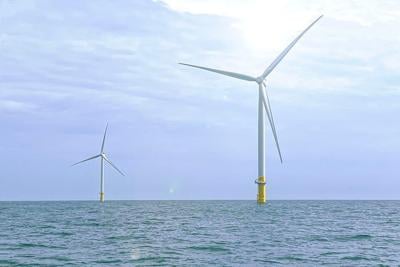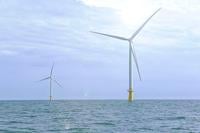DELMARVA - The Bureau of Ocean Energy Management (BOEM) has released its final Environmental Impact Statement (EIS) on U.S. Wind’s proposed offshore wind project off the coasts of Worcester County, MD and Sussex County, DE.
According to U.S. Wind, the final EIS is part of a two-year National Environmental Policy Act process. The release of the EIS indicates the company’s plans are nearly through the federal review process.
“We are well on our way to putting Maryland’s offshore wind goals that much closer to reality,” said Jeff Grybowski, US Wind CEO. “We applaud BOEM for the comprehensive and thorough review of our federal permit application. We are now one step closer to securing all of our federal permits by the end of this year, and look forward to the day we can get steel in the water.”
Findings in the EIS address concerns involved with various factors surrounding offshore wind including:
Historical Properties
BOEM’s findings did note direct adverse visual effects to three properties in the coastal area: Fort Miles Historic District in Lewes, the U.S. Coast Guard Tower in southern Ocean City, and the U.S. Life Saving Station Museum, also in Ocean City. The report acknowledges that the project would negatively affect the maritime settings of these locations, with over 100 of the turbines possibly visible during the day. BOEM did say the turbines would be less noticeable compared to other projects due to their distance from shore, however.
Birds
BOEM’s Impact Statement also analyzed the effects the wind project would have on the Atlantic Flyway, a migratory path used by hundreds of bird species during annual migrations. The report says that while the majority of bird species’ paths are concentrated along the coastline, 55 species of birds’ migration patterns would put them in the same area as U.S. Wind’s turbines. Due to the 0.6 - 1 nautical mile space between the structures, however, BOEM says birds would be able to fly through the area without changing course to avoid the turbines.
The Bureau also notes that offshore wind turbines move far slower than onshore constructions, making the risk of “motion smear,” when spinning blades appear transparent, less significant than in on-shore projects.
In their Impact Statement, federal officials also say a reef effect has been seen around offshore wind turbines, in which increased populations of fish and invertebrates around the structures can increase the presence of larger fish, marine mammals, and birds. That possible reef effect would serve as a beneficial impact in the area, according to BOEM.
Sea Turtles
BOEM’s report notes that noise from impact and pile driving during the construction of the offshore wind farm poses the highest risk of negative effects for sea turtles in the area.
“The accumulated stress and energetic costs of avoiding repeated exposures to pile-driving noise over a season or life stage could have long-term effects on survival and fitness,” the Impact Statement reads.
However, BOEM says turtles can grow accustomed to repeated noise exposure, which the Bureau says has been seen even when the repeated noise was separated by several days.
Vessel strikes to turtles in the project area as construction is underway, though possibly increased, are expected to have minor impacts on sea turtle populations, BOEM says.
Marine Mammals
The impacts U.S. Wind’s offshore wind project would have on marine mammals is discussed in the Impact Statement’s section “Analysis of Incomplete and Unavailable Information.” Studies conducted on other offshore wind projects near the Atlantic Outer Continental Shelf and the Gulf of Mexico, according to BOEM, have produced information used for predicting marine mammal populations affected in those areas. Those studies have not, however, given population trend data for 31 out of 39 marine mammals found where U.S. Wind’s proposed project would take place off the coast of Maryland.
The impact of construction noise is again mentioned as a potential detriment to marine life, but BOEM says there is a lack of research to support substantial negative effects.
“Of the available research, most studies conclude that, although pile-driving activities could cause avoidance behaviors or disruption of feeding activities, individuals would likely return to normal behaviors once the activity had stopped,” the EIS reads. “ However, uncertainty remains regarding the long-term cumulative acoustic impacts associated with multiple pile-driving projects that may occur over several years.”
BOEM also says more research is needed to establish the effects of underwater noise from construction on whales.
“At present, this EIS has no basis to conclude that these [projects], with the uncertainties as noted above, would result in significant adverse impacts on marine mammal populations,” the EIS report reads.
Economic Impact
In their report, BOEM acknowledges the importance of tourism as a major economic driver on Delmarva, which has also been a driving force behind local opposition to U.S. Wind’s proposed project. In their EIS, BOEM says visitors may make different decisions on where they travel due to lighting from the offshore wind structures at night. However, the EIS cites a University of Delaware study that found turbines visible more than 15 miles away would not have significant impacts on businesses dependent on tourism. U.S. Wind’s project puts the nearest planned turbine at 15.1 miles from the coast of Ocean City, MD.
For the full EIS and what was studied, you can visit BOEM’s website.



